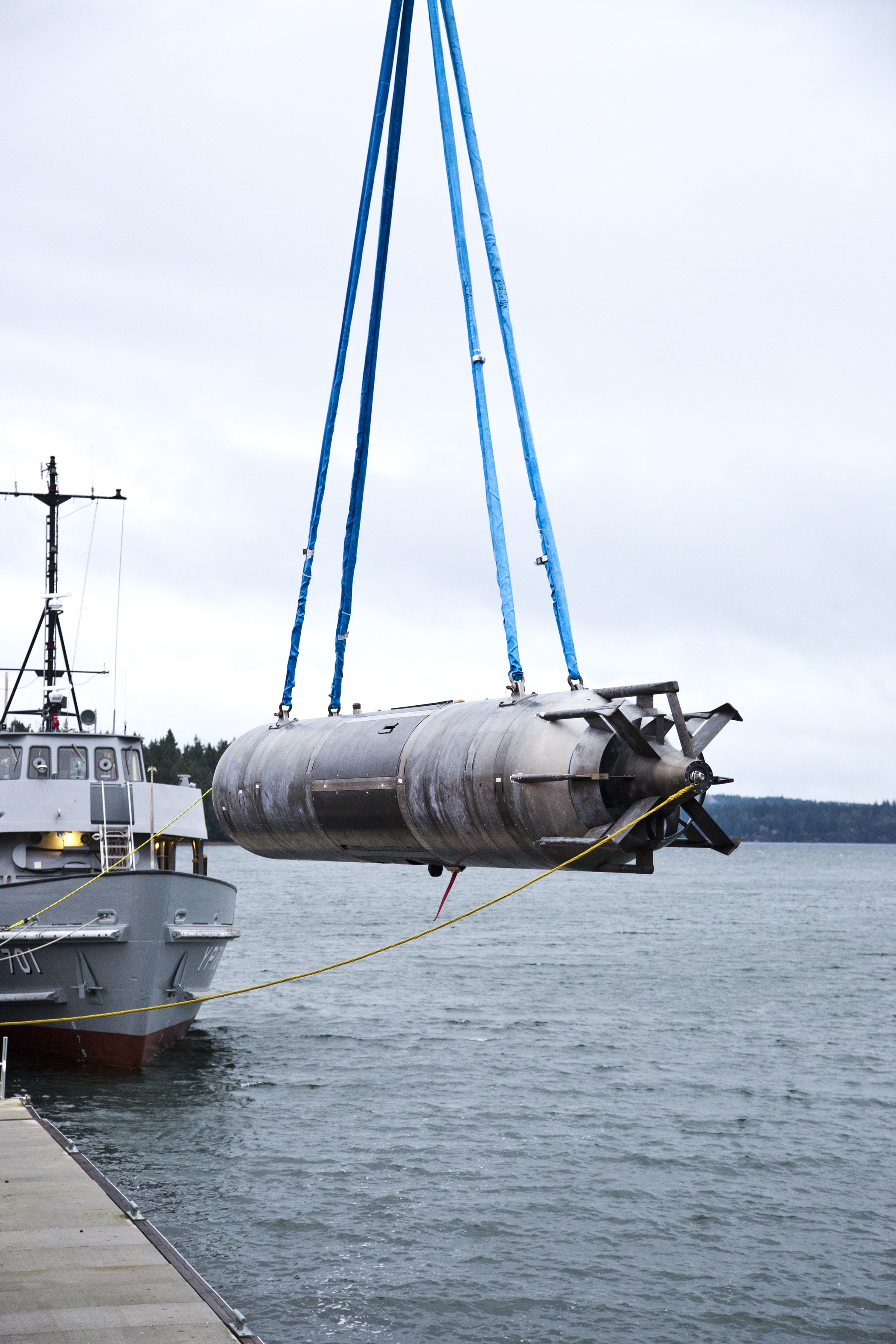
WASHINGTON, D.C. – The director of unmanned warfare systems (OPNAV N99) will keep a particularly close eye on the Common Control System as it continues through development, after a demonstration last month proved that the system that was first tested on an unmanned air vehicle could also control an underwater vehicle, the director said Friday.
Rear Adm. Robert Girrier said at an event co-hosted by the U.S. Naval Institute and Center for Strategic and International Studies that the Common Control System will be important to the Navy’s future portfolio of unmanned vehicles – in addition to avoiding the cost of developing unique command and control capabilities for each new unmanned system that comes along, CCS will provide a common user interface and the ability to match up new combinations of unmanned vehicles and payloads.
N99’s role for most unmanned technologies will be to take requirements from around the fleet, find technologies to guide through the precarious advanced development and prototyping phase, and then turn the successful technologies over to resource sponsors – the the surface warfare directorate or air warfare directorate, for example – to buy and field.
With the Common Control System, however, Girrier will keep the system under N99 control.
“Of all the systems that are out there and programs that I’ll be interested in getting involved in …. the traditional resource sponsors will have those – with the exception of the Common Control System,” Girrier said.
“That one we’re going to keep because it is pervasive to unmanned systems writ large and it’s that important. So we will carefully hold that and pay attention to that and ensure that it’s populated with undersea, surface and air” unmanned systems.
The Common Control System is a software and user interface system that would provide the brains behind future Navy unmanned vehicles, regardless of the domain the vehicle operates in or the payloads it carries to accomplish its mission. Once fielded, it will provide common vehicle management, mission planning and mission management capabilities for all the vehicles in the Navy’s unmanned portfolio.
The Navy tested the system on a surrogate large diameter unmanned underwater vehicle (LDUUV) last month at the Naval Undersea Warfare Center (NUWC) Keyport in Puget Sound, Wash. The Dec. 7-11 test showed that operators could use the control system to plan and execute several surveillance and intelligence preparation missions, according to a news release from Naval Air Systems Command.
The control system sent pre-planned missions to the LDUUV’s autonomous controller via a radio link and displayed actual vehicle status information to the operators during the test, according to the NAVAIR statement. The vehicle was able to maneuver to the target areas and collect imagery.
“These tests proved that operators could use CCS from a single global operations center to plan, command, and monitor UUVs on missions located anywhere in the world,” Capt. Ralph Lee, who oversees the Navy’s CCS program at Patuxent River, Md., said in the statement.
“This event also showed us that CCS is adaptable from the [unmanned aerial vehicle] to [unmanned undersea vehicle] missions.”
The NAVAIR statement notes that CCS will first be deployed on air vehicles and will reduce risk and cost as the Navy develops additional unmanned vehicles in the future.
Girrier said Friday that it was important to keep in mind how the Navy’s unmanned vehicles will ultimately be used. Though some may serve a Navy-only purpose – sending a UUV out for surveillance or mapping ahead of an attack submarine, for example – other systems may need to be interoperable with Marine Corps systems during blue-green operations. And some unmanned systems may need to interface with Army or Air Force assets, with foreign partners’ systems or even with equipment from civilian government agencies. As CCS development moves forward, Girrier said he will put an emphasis on making the system open and interoperable to support any kind of mission, in any domain, with any potential partner.





